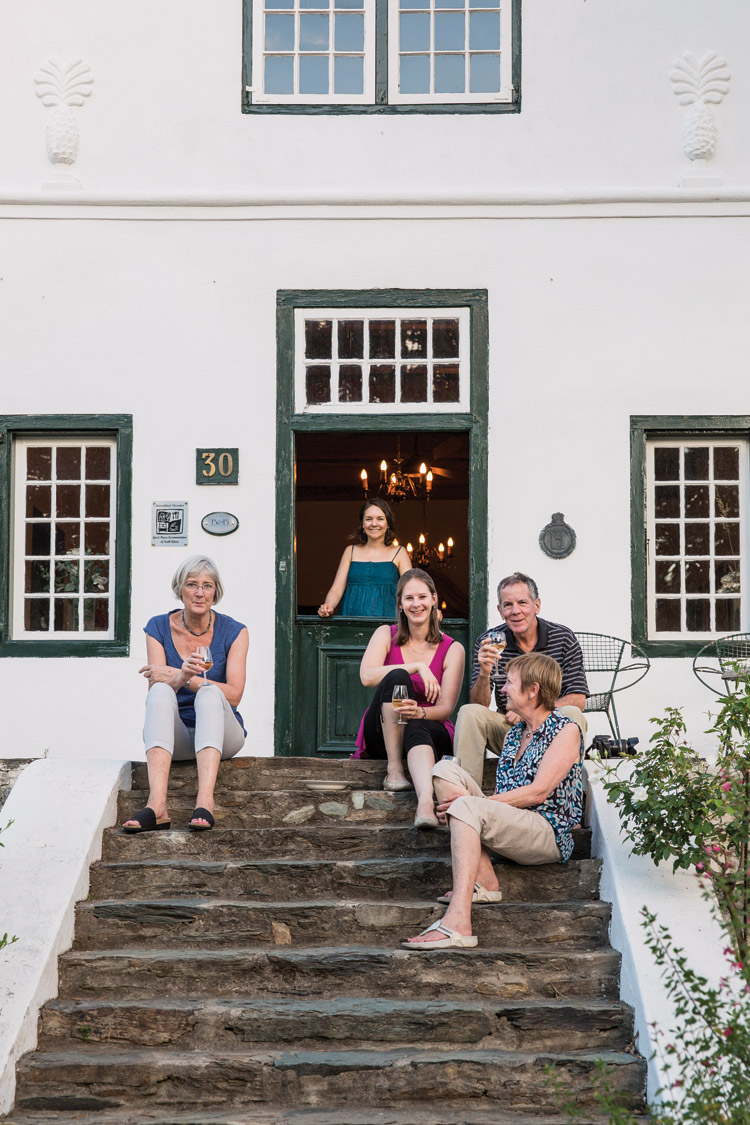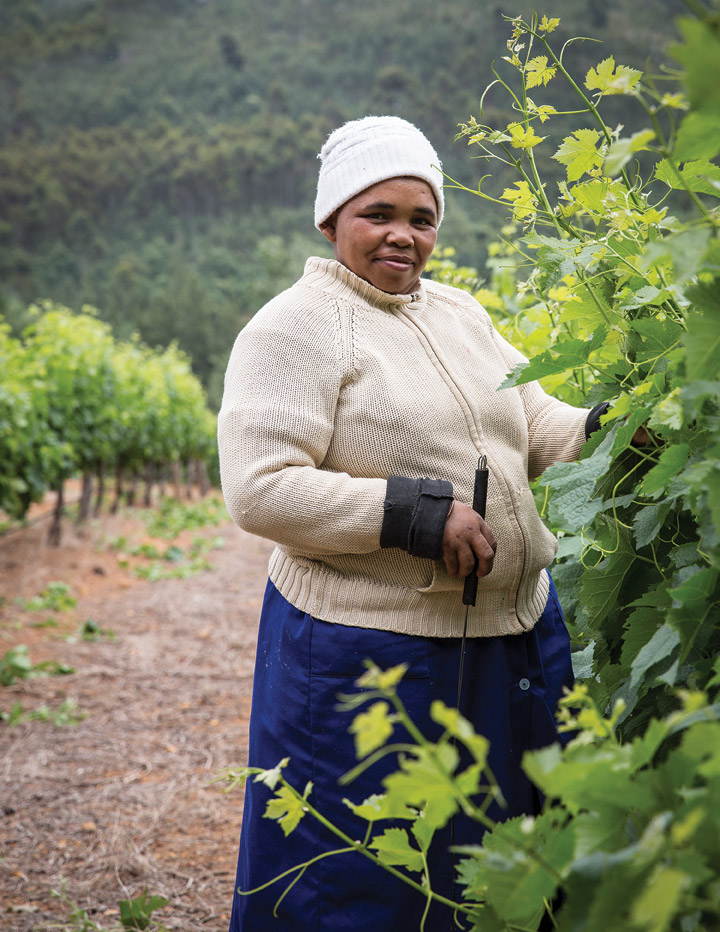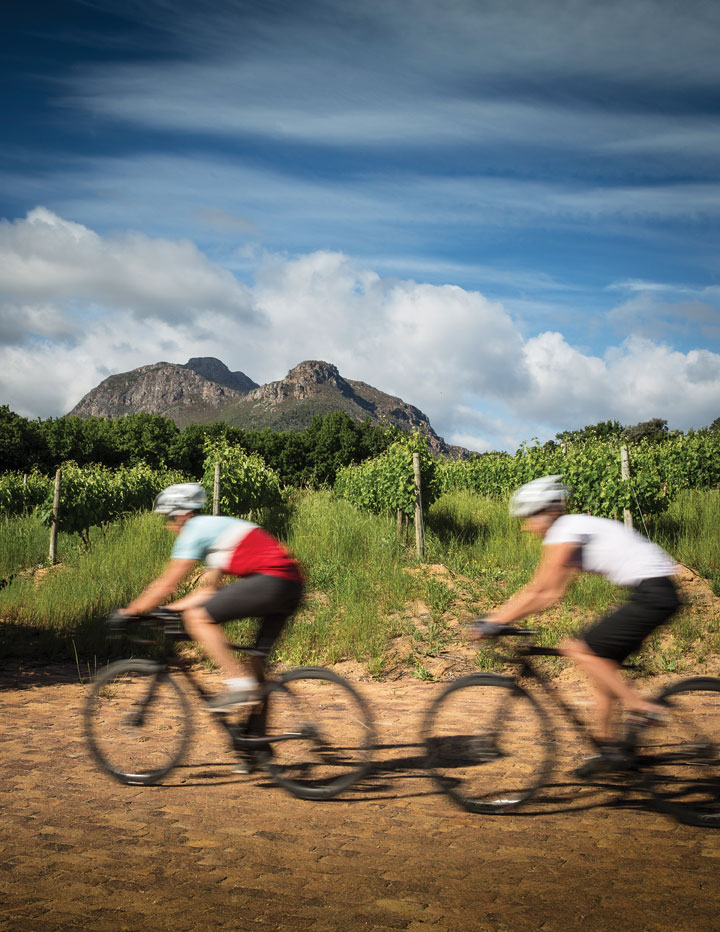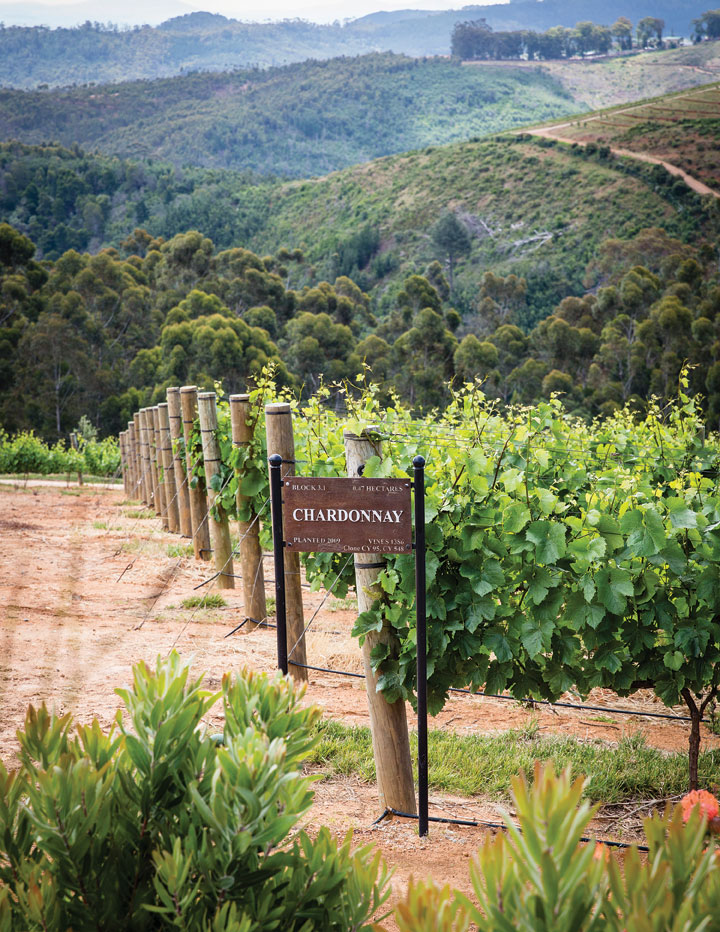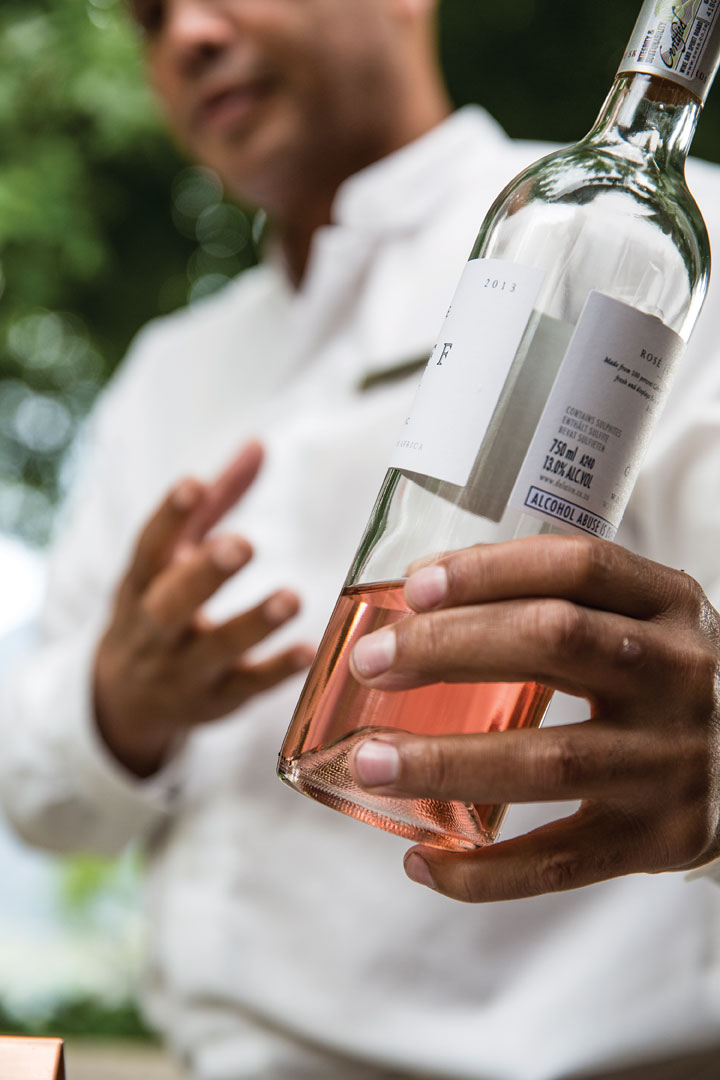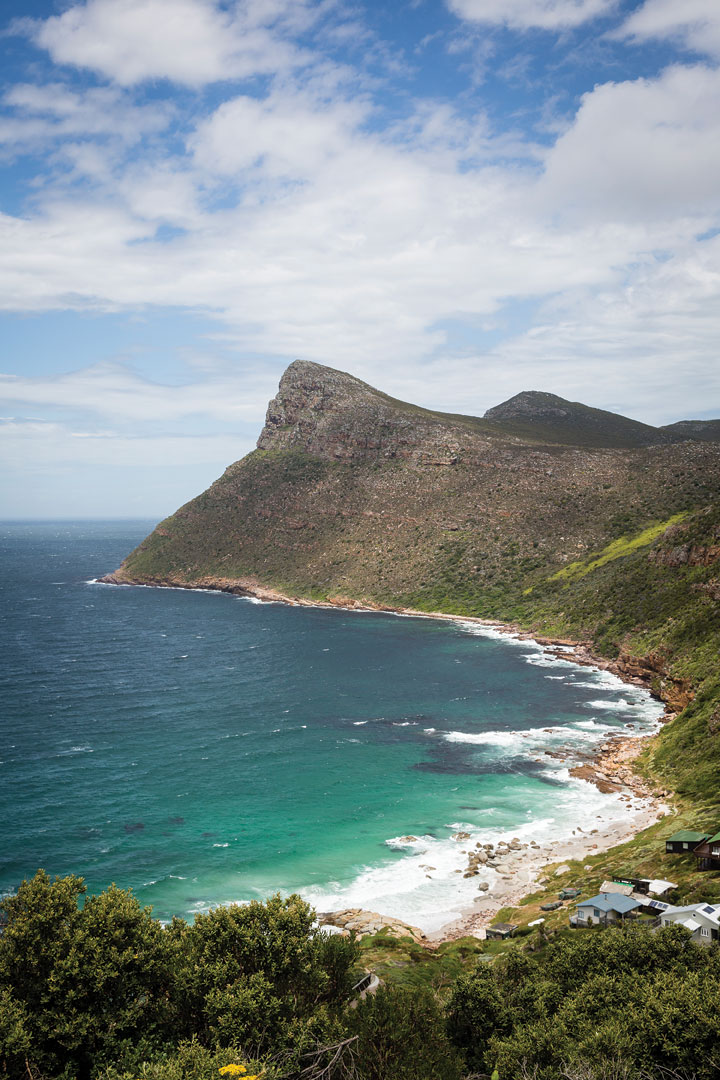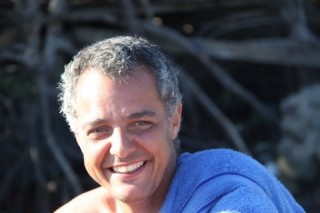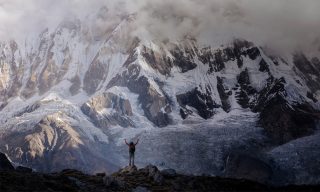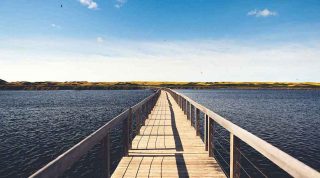The next two stops on our tour are arguably the most iconic towns in the Cape Winelands, Franschhoek and Stellenbosch. The roads here are wider and busier, and the wineries more profuse, which makes it next to impossible to get very far on the bike. Heading into Franschhoek, there’s La Motte and Rickety Bridge, both of which come highly recommended. And of course we can’t pass up Môreson and its acclaimed Bread & Wine restaurant, where Neil and Tina Jewell serve locally sourced, house-cured charcuterie alongside the winery’s award-winning chardonnay. By 4 p.m., it seems a safer bet to let Bennett drive us the remaining six klicks to the guesthouse than to ride.
We check in at Avondrood, a Cape Dutch home that’s recently been renovated into a bed-and-breakfast. With just six rooms, a manicured garden out the back, and a cozy common area where guests congregate and read and play games, it’s homey and easygoing—not unlike Franschhoek itself. Owner Justin Mitchell says that he’s been almost fully booked since opening less than a year ago.
“The weak rand is working in our favor. Travelers can come and have an experience that might otherwise cost double or triple elsewhere in the world,” he tells me. But he thinks the popularity is more than just economics. Mitchell says that South Africa’s star is still rising, especially in the afterglow of hosting the 2010 World Cup. “Before that, and even still, people would say you shouldn’t come to South Africa because it’s too dangerous,” he says. “But millions of people did come and were blown away. People who take the time to visit usually return again and again.”
The next morning, Jen and I stroll down main street Franschhoek. It’s the Cape Dutch equivalent of Healdsburg, the friendly vineyard-touring hub in California’s Sonoma County. Locals sit on the leafy patios sipping coffee, and small businesses peddle handmade pastries and local art. When a Japanese couple wanders into the café where we’re sitting and asks the barista for advice on the best local wineries, a question she likely gets a dozen times a day, she pulls out a map and spends almost 10 minutes making sugges-tions. It’s the sort of hospitable small town you visit and immediately think, I could live here.
Indeed, we have a hard time tearing ourselves away. We don’t get rolling till after midday, and we don’t make it far—less than 10 kilometers—before we’re wooed by yet another winery. I almost feel guilty, but it is past noon, after all.
It’s unclear why or how bike tours and wine country became so entwined, but it’s a massive worldwide industry, from old standby destinations like Napa and Provence to up-and-coming ones such as Mendoza, Argentina, and Croatia’s Istria. I’ve always assumed that it was partly because while drinking and driving is perilous, biking from tasting to tasting a bit tipsy is just good fun. There’s also a wine tour’s magical blend of endorphins and alcohol, the former jacking up the exhilaration factor and the latter adding a healthy dose of decompression. It’s a bit like working out at the gym, getting a massage, and drinking a martini all at once.
By the time we reach Delaire Graff it is late afternoon. This elegant wine estate is so meticulously groomed that even the entire stretch of grounds running alongside its cobbled, kilometer-long entrance road looks like an English garden. Our stand-alone suite has two huge rooms and a veranda and a plunge pool with a view over the valley and down to Stellenbosch. A bottle of cabernet franc rosé is chilling, and Jen wastes no time in uncorking it. Never mind that we’re due at the winery shortly for a full tasting. While she’s pouring, we receive word that our bikes will clear customs tomorrow—just in time for us to ship them back home. We toast the irony that they will have traveled halfway around the world and back without ever touching African soil.
On the tasting room’s patio, a thirty-something sommelier named Randall walks us through Delaire’s finest. We don’t have the heart to stop him when he commences with the cabernet franc rosé, which we’re already well acquainted with, but then comes a chardonnay, a sauvignon blanc–sémillon blend, the Reserve Cabernet Sauvignon, and finally the winery’s signature Bordeaux-style Botmaskop (Afrikaans for “boatman’s head,” the name of the mountain on whose slopes the estate sits). Randall brings each glass out slowly, giving us time to savor the views and the quietude as much as the wines.
It’s something of a culinary meditation, one of those rare moments in life when you are completely present and able to drink up every nuance: the slight spice when I lever my nose inside the wine glass; the rich taste of berries that sits on the back of my tongue; how the flavors shift and turn with different bites of appetizers; the light breeze rustling through the century-old oaks above; the slight brininess in the air blowing off the distant Atlantic.
Perhaps this is why wine country pairs so well with cycling. Both are about pausing, not rushing through, fully absorbing the experience. As we sip the Botmaskop, I notice that the sunset turns the vineyard below us a breathtaking scarlet almost the color of the wine in our glasses. From here forward, every time I uncork a bottle South African red, I’ll remember that quiet, contented afternoon.

